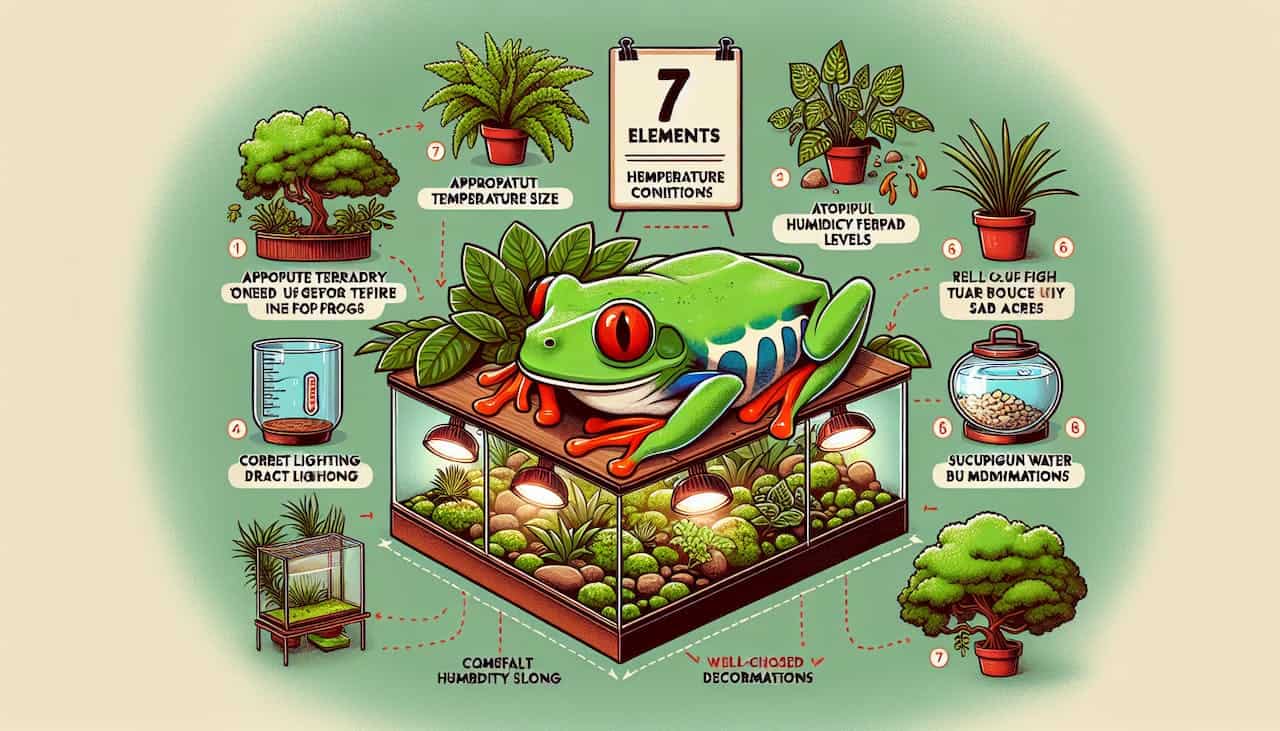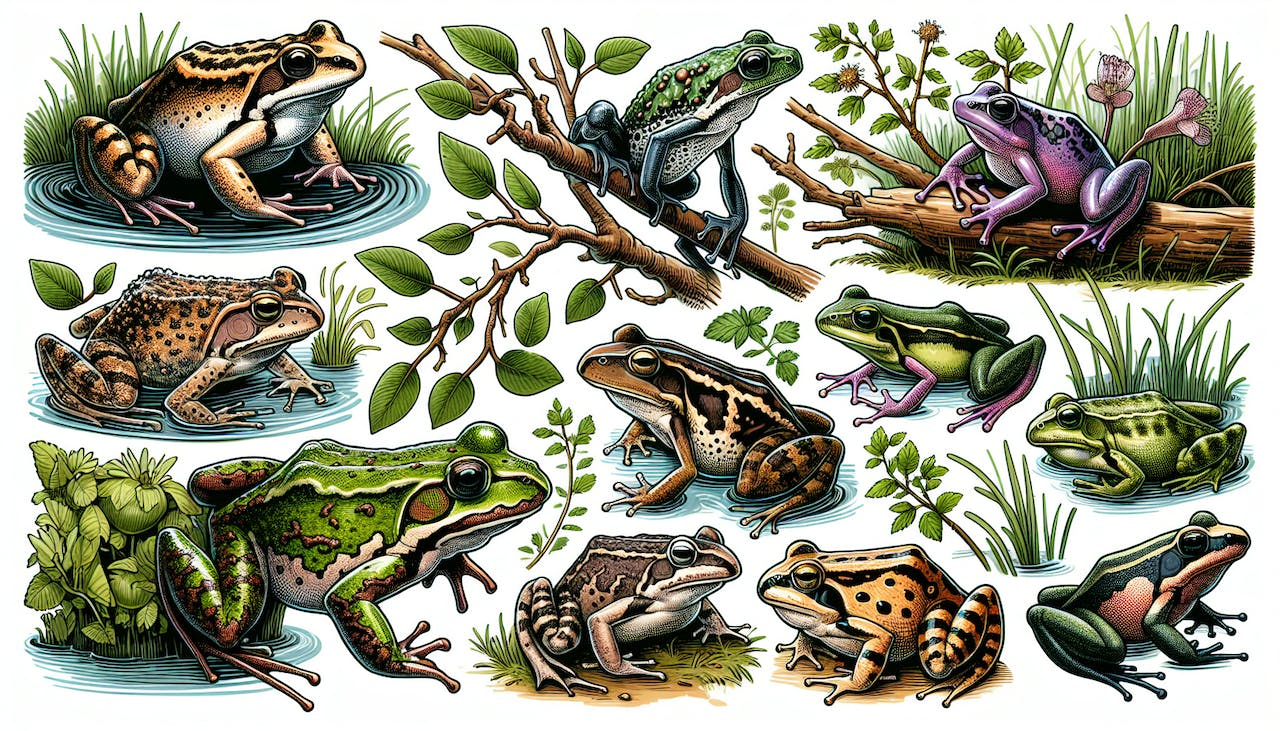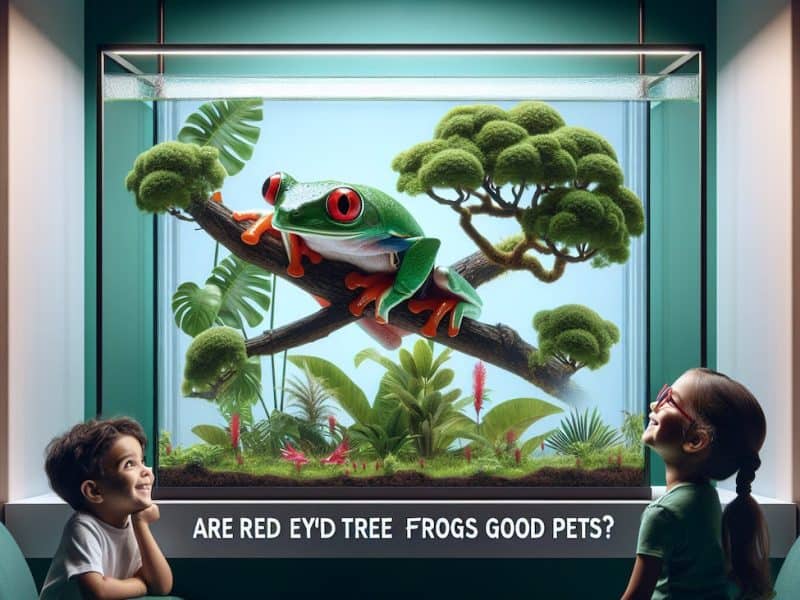Vibrant red eyed tree frogs are gaining popularity as unique pet amphibians. Replicating the warm, humid, vertically oriented rainforest environment where they naturally reside is key but can be challenging for beginners. This comprehensive guide draws on expert wisdom to reveal 7 secrets for constructing an ideal setup.
Secret 1: Choose an Adequately Sized Glass Terrarium
“Red eyed tree frogs are primarily arboreal and need vertical space to climb and hunt insects,” says Dr. Susan Barnard, amphibian veterinarian. She recommends a minimum 18 x 18 x 24 inch tall vivarium for a pair, but bigger is always better. Opt for front-opening glass enclosures from brands like Exo Terra or Zoo Med. “The front doors provide convenient access without disturbing your frogs,” says Kyle Roach, founder of Rainforest Junkies blog.
Secret 2: Establish Proper Day and Night Temperatures
Frogs require warmer daytime ambient heat in the 75-80°F range, dropping about 10 degrees cooler at night, recommends Roach. “Use a low wattage ceramic heat emitter or incandescent bulb in a dome fixture positioned over one side of the tank to establish a thermal gradient,” advises Dr. Barnard. Regulate with a thermostat to prevent overheating.
Secret 3: Use Layered Substrates for Humidity Retention
Humidity should be kept consistently around 80%. Amphibian specialist Dr. Lily Chen recommends using coconut fiber substrate in a 2-3 inch layer topped with leaf litter. “This layered effect helps trap moisture while providing beneficial microfauna and natural foraging opportunities,” she says.
Secret 4: Install an Automated Misting System
Misting is vital for hydration and promoting lush plant growth. “An automated mister on a timer is the most reliable way to regularly saturate the tank,” says Roach. Program the mister for at least two 30-second misting sessions daily. Pair this with manually misting once a day.
Secret 5: Strategically Position Perches and Hides
In nature, these frogs spend most of their time perched high up on rainforest vegetation. Recreate this by placing sturdy branches, vines and bromeliads towards the top of the enclosure. “Be sure to angle plants and perches to provide easy climbing access,” Chen recommends. Also incorporate hides like curled leaves, cork bark and coco huts lower down to make frogs feel secure.
Secret 6: Select the Right Plants
Live plants enhance aesthetics, oxygenate the habitat and help maintain humidity through transpiration. Chen advises choosing hardy tropical species like pothos, bromeliads, creeping fig and crotons that can withstand tropical conditions. Supplement with washed manzanita and ghostwood.
Secret 7: Set Up Proper Lighting
Full spectrum lighting with UVB rays are critical for vitamin D3 synthesis to prevent bone disease. “Use compact fluorescent or LED bulbs specifically designed for tropical frogs to ensure adequate UVB exposure,” Barnard states. Place the bulb directly over mesh screen top to prevent filtering of beneficial rays. Replace bulbs every 6-9 months per manufacturer guidelines as UV wavelengths decline over time.
Conclusion
Follow this expert guidance for establishing ideal habitat conditions, and your red eyed tree frogs will thrive for years to come. Let us know if you have any other questions!



